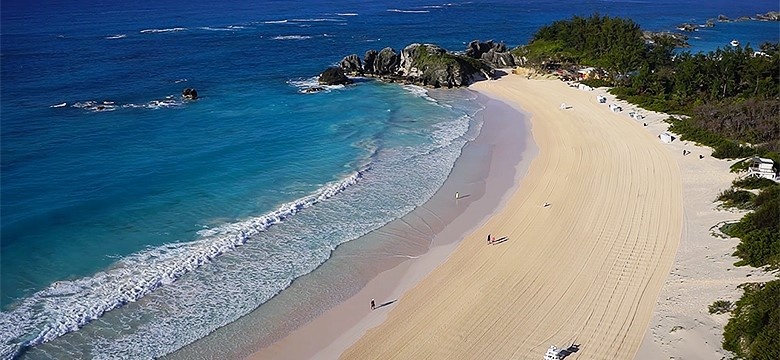
The Ministry of Health has published the latest bacterial counts for Bermuda's bathing beaches as part of their Seawater Monitoring Programme; and results were encouraging.
The Department of Health routinely samples and tests seawater from Bermuda's beaches to assure bathing water quality. The water is tested for enterococci, a group of bacteria which are used as indicators of pollution, in accordance with the US EPA methodology for Recreational Water Quality for Marine Water.
Beaches tested include Warwick Long Bay, Horseshoe Bay, Elbow Beach, Grape Bay, Tobacco Bay, Clearwater Beach, Grotto Bay Beach, John Smiths Bay and Shelly Bay.
If we compare results May-July 2019 with results from the same period in 2020, we can see that counts this year are substantially lower.
If we look at, for example, Horseshoe Bay (West) for the week of June 30th 2019, we can see that the number is 30 CFU/100ml while it is only 4 CFU/100ml for the same week in 2020.
Likewise, if we look at Tobacco Bay, it saw a count of 17 CFU/100ml on the week of June 9 in 2019 and only 5.5 CFU/100ml that same week in 2020.
"We believe this difference is due to the decreased numbers of swimmers at the bathing beaches," said the Minister of Health the Hon. Kim Wilson JP MP. "It's really good to see how far below the US EPA guidelines we are with all of our beaches which is, of course, great news not only for our tourists and prospective tourists but for anyone enjoying our beaches this season!
"I would like to commend the Ministry of Health team for continuing on with their usual public health protection duties, amidst the backdrop of also dealing with a pandemic."
Enterococci are present in human and animal faeces and can enter marine waters from a variety of sources such as storm water runoff, animal and seabird waste, failing septic systems, sewage effluent, boating waste and from bathers themselves. During the peak months of April to October, Environmental Health Officers collect water samples at the most popular beaches with the larger beaches having multiple sampling points. As a result, approximately fifteen samples are collected and tested once a week.
As part of the Seawater Monitoring Programme, the public are notified if waters exceed acceptable values by posted notice on the affected beaches, media releases and by advisory at www.gov.bm.
The geometric mean is calculated from the enterococci counts over a 30 day period and is updated each week. This is done according to the EPA recreational water guidelines, which recommend that the 30-day geometric mean does not exceed 35 enterococci per 100 millilitres.
For more information go to: https://www.gov.bm/seawater-monitoring-programme-bathing-beaches
